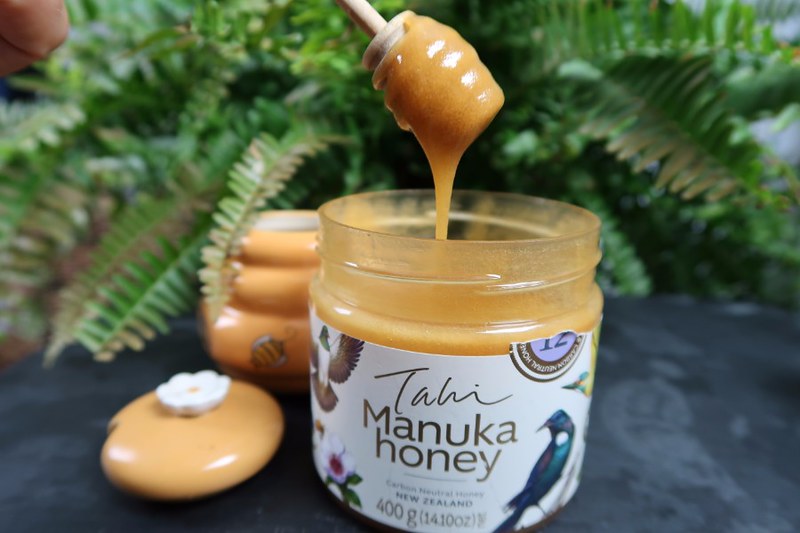Manuka honey, a natural product renowned for its antibacterial and potential health benefits, has been at the center of a prolonged legal dispute between Australia and New Zealand. The conflict involves the naming rights to “Manuka honey,” a product whose potential health benefits and significant price markup have made it a highly sought-after commodity in the international market.
Manuka honey is produced by bees that feed on the tiny pale blooms of the Manuka tree, a white-flowered tree native to both Australia and New Zealand. However, it’s more commonly known as “tea tree” in Australia. So, why is a Manuka honey trademark so important to New Zealand beekeepers and why is Manuka honey so expensive? Read on to find out.
Manuka Honey Trademark Battle
The Manuka honey trademark battle began in earnest in 2015 when New Zealand producers first tried to establish an exclusive right to the term. The fight was described by the Intellectual Property Office of New Zealand (IPO) as a “trans-Tasman tussle of extraordinary proportions.”
Related: Lab-Grown Meat Ban Looms in Italy in Bid to Protect Food Heritage
The latest round of the dispute concluded in May 2023, when the New Zealand IPO ruled that New Zealand’s Manuka beekeepers’ attempt to trademark the term did not meet the necessary requirements. According to the IPO, the term Manuka was deemed to be descriptive rather than unique to a particular geography or group. This decision is significant as it suggests that the term Manuka, a Māori word of the indigenous Polynesian people of New Zealand, is not exclusively linked to New Zealand’s honey production.
The reaction to the ruling was mixed, with disappointment from New Zealand producers and joy from their Australian counterparts. Pita Tipene, chair of the Manuka Charitable Trust, expressed disappointment in the decision and resolved to continue the fight to protect what he describes as a uniquely New Zealand treasure.
Conversely, the Australian Manuka Honey Association welcomed the decision as a “commonsense outcome.” The association’s chairman, Ben McKee, highlighted the similarities in production and the shared antimicrobial properties of both countries’ honey, expressing delight at the outcome and plans to boost international sales due to rising demand.
This ruling has broader implications for the global food industry, especially within the business-to-business (B2B) sector. It underscores the complexities of trademarking food products, the influences of cultural heritage and the growing demand for authenticity. Food and beverage manufacturers, traders and wholesalers in this space will have to navigate these issues, keeping a close eye on the evolving dynamics of the industry.
The Manuka honey trademark case serves as a precedent for other food items with cultural or regional significance. The outcome of this case extends beyond the borders of New Zealand and Australia, serving as a learning point for food producers worldwide. While the battle over the term Manuka may have seen its latest chapter closed, it’s evident that the story is far from over, with the potential for further appeals and legal challenges down the line.
Why is Manuka Honey So Expensive?
Manuka Honey is far more costly than standard honey due to a combination of factors. First, it has unique antibacterial properties, which are attributed to its high concentration of methylglyoxal (MGO). This compound is believed to have health benefits and is not found in such high concentrations in other types of honey. Because of this, Manuka honey is often used in natural remedies and skincare products.
Second, Manuka honey is only produced in New Zealand and parts of Australia, where the Manuka tree grows. The honey is made by bees that pollinate the Manuka tree, and the bloom period is very short (just two to six weeks per year), which limits the amount of Manuka honey that can be produced each year. There are also high export costs associated with packaging, exporting and distributing the honey to international markets.
Third, there is a high global demand for Manuka honey due to its perceived health benefits, which outstrips the limited supply. This high demand and limited supply drive up the price.
Lastly, Manuka honey is tested and certified to ensure it contains certain levels of its active ingredients. The Unique Manuka Factor (UMF) rating, for instance, measures the antibacterial potency of the honey. This testing and certification process further adds to the cost of the honey.












Join or login to leave a comment
JOIN LOGIN